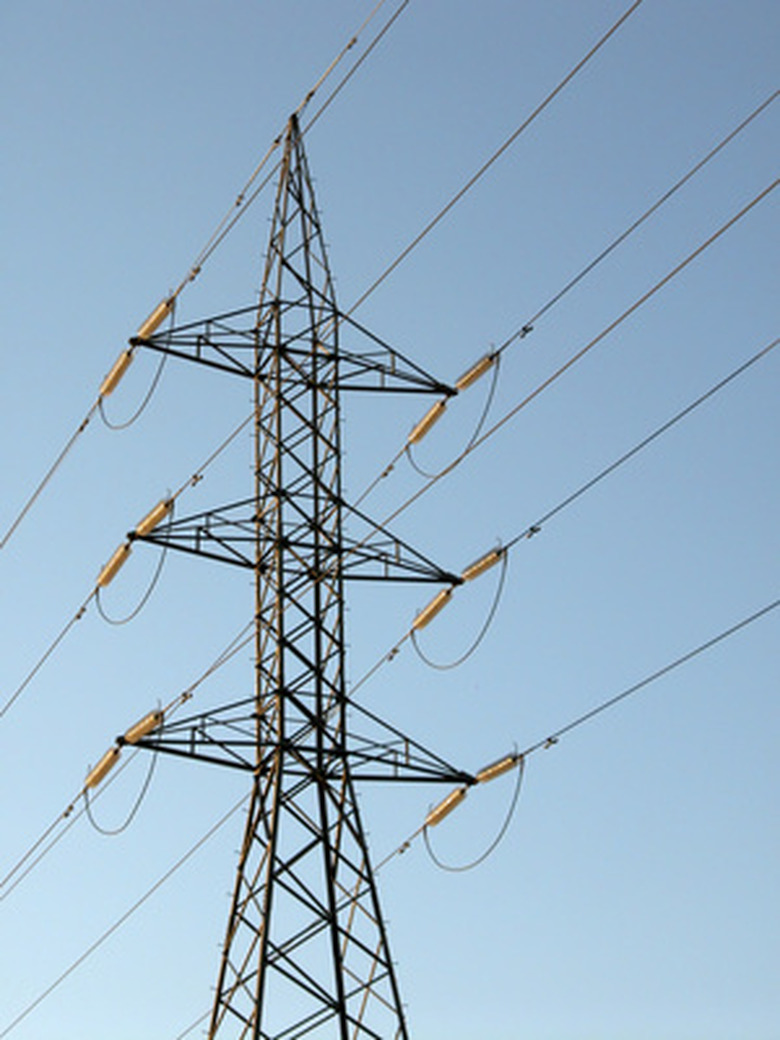Simple Explanation Of Electromagnets
Electromagnets use electricity to create a magnetic field. Electromagnets are important parts both of electric motors and electricity generators. The strength of the magnetic field created by an electromagnet can vary from fairly weak to very strong. A number of factors, including construction method and the strength of the electrical current, affect the strength of an electromagnet.
Basis of Electromagnets
Basis of Electromagnets
The basic concept of an electromagnet is based on the fact that an electric current flowing through a wire creates a weak magnetic field. The magnetic field around a straight wire forms concentric circles of magnetism. Because it creates a weak magnetic field, a straight wire could be considered the most basic form of an electromagnet.
Increasing the Magnetic Pull
Increasing the Magnetic Pull
The most basic way of increasing the magnetism created by current running through the wires is to wrap the wires around an iron core, like a nail. By coiling the wire, the magnetic field transfers to the ferrous iron core of the nail, causing it to become a stronger magnet. It becomes stronger because each coil of wire adds magnetic pull to the iron core.
Current Strength
Current Strength
Increasing the current also increases the pull of the electromagnet. However, because some of the current converts to heat in the wires, too much current can cause the coils to become dangerously hot. Be careful when increasing magnetic pull through increased current.
How The Fields Form
How The Fields Form
Electricity is a stream of flowing electrons. Electrons have a negative electrical charge. As these negative particles move, they generate magnetic fields. In cases where current strength increases, the number of electrons flowing through a given length of wires increases.
Safety and Warnings
Safety and Warnings
If you are thinking of experimenting with an electromagnet, there are some safety considerations to remember. First, make sure your magnet coil wire is insulated. If your wire is not insulated, your electromagnet will short out and could become dangerously hot. Second, start with simple household batteries as sources of current. Increase current by wiring batteries in parallel. To wire batteries in parallel, connect multiple positive battery poles to one end of your electromagnet and connect all of the negative poles to the other end of your electromagnet. Be careful, though, to increase power slowly to reduce the risk of overheating your coil.
Cite This Article
MLA
Jie, Ma Wen. "Simple Explanation Of Electromagnets" sciencing.com, https://www.sciencing.com/simple-explanation-electromagnets-6382350/. 24 April 2017.
APA
Jie, Ma Wen. (2017, April 24). Simple Explanation Of Electromagnets. sciencing.com. Retrieved from https://www.sciencing.com/simple-explanation-electromagnets-6382350/
Chicago
Jie, Ma Wen. Simple Explanation Of Electromagnets last modified March 24, 2022. https://www.sciencing.com/simple-explanation-electromagnets-6382350/
